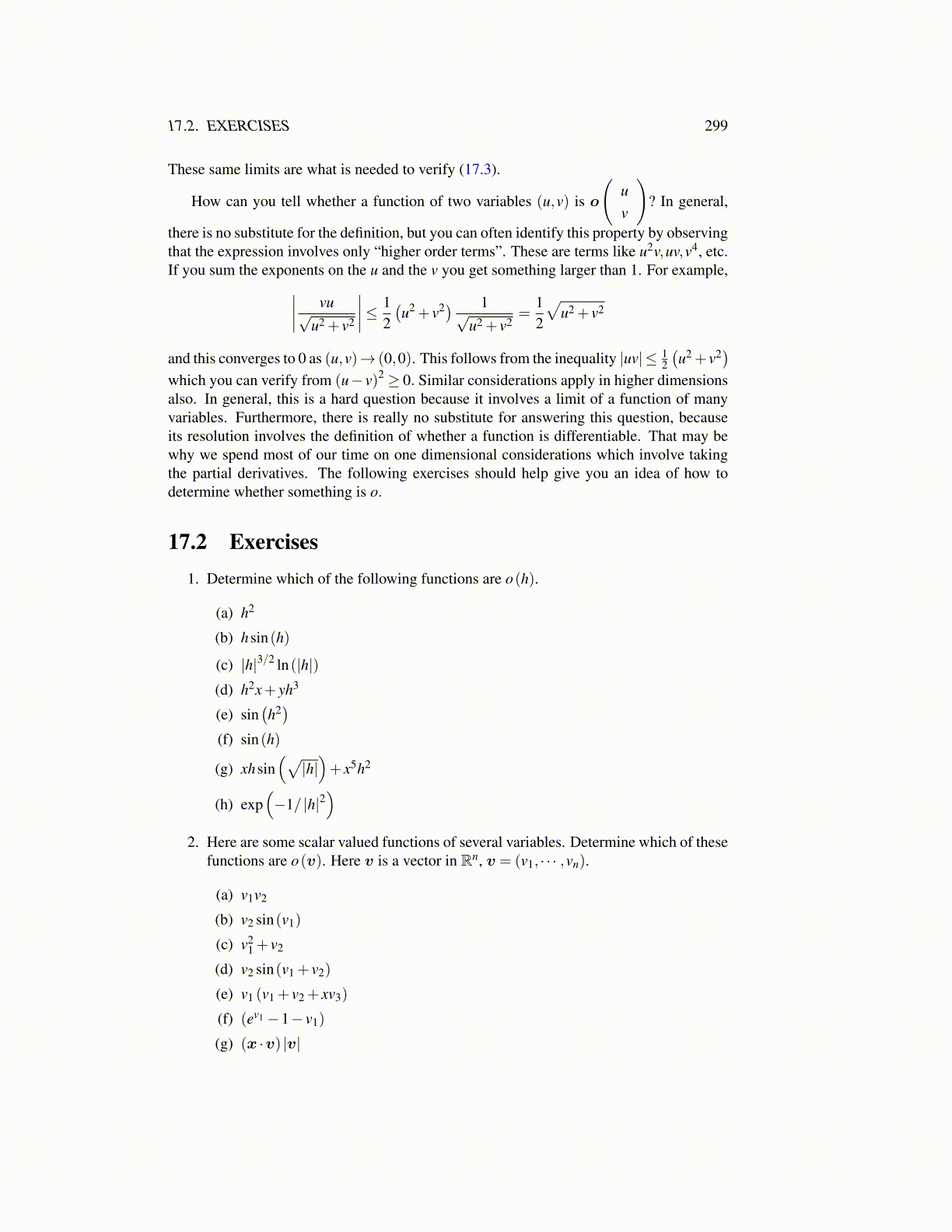
17.2. EXERCISES 299
These same limits are what is needed to verify (17.3).
How can you tell whether a function of two variables (u,v) is o
(uv
)? In general,
there is no substitute for the definition, but you can often identify this property by observingthat the expression involves only “higher order terms”. These are terms like u2v,uv,v4, etc.If you sum the exponents on the u and the v you get something larger than 1. For example,∣∣∣∣ vu√
u2 + v2
∣∣∣∣≤ 12(u2 + v2) 1√
u2 + v2=
12
√u2 + v2
and this converges to 0 as (u,v)→ (0,0). This follows from the inequality |uv| ≤ 12
(u2 + v2
)which you can verify from (u− v)2 ≥ 0. Similar considerations apply in higher dimensionsalso. In general, this is a hard question because it involves a limit of a function of manyvariables. Furthermore, there is really no substitute for answering this question, becauseits resolution involves the definition of whether a function is differentiable. That may bewhy we spend most of our time on one dimensional considerations which involve takingthe partial derivatives. The following exercises should help give you an idea of how todetermine whether something is o.
17.2 Exercises1. Determine which of the following functions are o(h).
(a) h2
(b) hsin(h)
(c) |h|3/2 ln(|h|)(d) h2x+ yh3
(e) sin(h2)
(f) sin(h)
(g) xhsin(√|h|)+ x5h2
(h) exp(−1/ |h|2
)2. Here are some scalar valued functions of several variables. Determine which of these
functions are o(v). Here v is a vector in Rn, v = (v1, · · · ,vn).
(a) v1v2
(b) v2 sin(v1)
(c) v21 + v2
(d) v2 sin(v1 + v2)
(e) v1 (v1 + v2 + xv3)
(f) (ev1 −1− v1)
(g) (x ·v) |v|